Well, as happy endings go, this won the slam dunk, as in the process of having to taste-test my own work, I started learning an appreciation for the taste and texture of the macaron as I tried to figure what the heck made them so special to other consumers. And now, I love both playing around with these little bakery sandwiches and consuming the results! Win-win!
- 1-3 days before making: Separate egg whites and keep them in a container in the fridge. You may cover them with a sheet of plastic wrap and poke several holes into the top. When ready to make the macarons, take the egg whites out of the fridge an hour beforehand and let them come up to room temperature.
- (optional) Prepare a guide for the macarons by printing out rows of one-inch circles on 4 sheets of paper and lining them on the bottoms of two baking sheets.
- Lay parchment paper over two baking sheets, cutting them down to the size of the sheet tray. It's important not to fold over/overlap the parchment paper on itself, otherwise the macarons won't bake evenly.
- Gently sift the confectioners sugar and almond flour into a bowl (don't try to force it through the sieve), throwing away the large bits that are left behind (don't be afraid to toss as much as a teaspoon's worth if necessary). Transfer to a food processor and pulse a few times for several seconds at a time. Then sift back into a bowl, once again throwing away the large pieces.
- Add the room temperature egg whites into a very clean bowl.
- Using an electric mixer, whisk egg whites. Once they begin to foam add the cream of tartar and then SLOWLY start to add the granulated sugar while you whip to the soft peak stage.
- (optional) You can add food coloring if desired at any point between now and just before step 10. However, if you're planning on making more than one color of macaron from a single batch of batter, I would suggest you add it toward the end of step 9, just as the batter is coming together into its "lava" form. The last few folds of the spatula to mix the color thoroughly will also help the batter achieve this final state. It may take a little practice to recognize when the batter is about to achieve this ideal phase, so I would suggest making it using a single color a few times first until you learn the timing of each phase the batter goes through.
- Add the vanilla. Continue to beat until stiff peaks form.
- Begin folding in 1/3 of the dry ingredients. Once incorporated, carefully add the remaining dry ingredients and fold gently. It will go through a stage in which the batter looks granular, but keep folding and it will slowly start to incorporate and smooth out.
- The final mixture should look like flowing lava, and be able to form a figure eight in the bowl without breaking the stream of falling batter. Spoon into a piping bag with a medium round piping tip and you’re ready to start piping.
- If you want, you can glue down the parchment paper onto the baking sheet with dabs of batter under the corners. Pipe dollops onto the parchment paper by holding the bag straight up and down, squeezing, and then lifting with a circular motion of the tip. Once all the macarons are piped, lift up the baking sheet and let it drop on the counter several times to release air bubbles. Allow to sit for at least 40 minutes, or until a tacky "skin" forms on top that won't stick to your finger enough to break away if you tap it gently.
- Bake at 300F for 7 minutes, rotate tray, then bake for another 5-8 minutes. The macarons are done when nudging them does not feel like you'll displace the top shell of the macaron from its foot. Allow to cool completely before removing from baking sheet, or else the foot might stick.
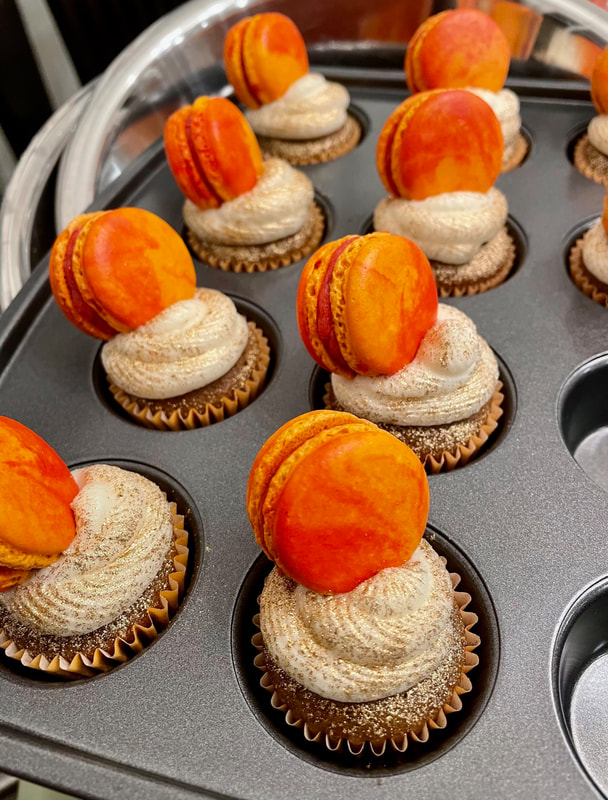
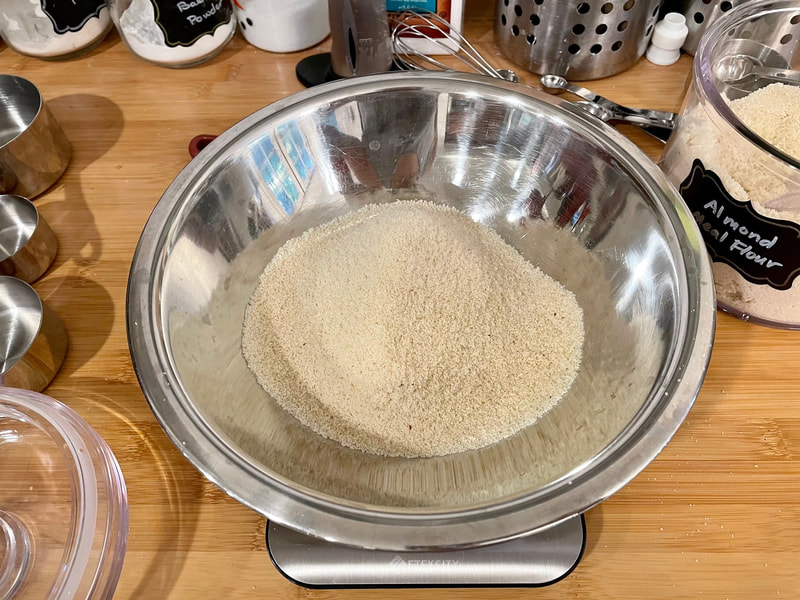
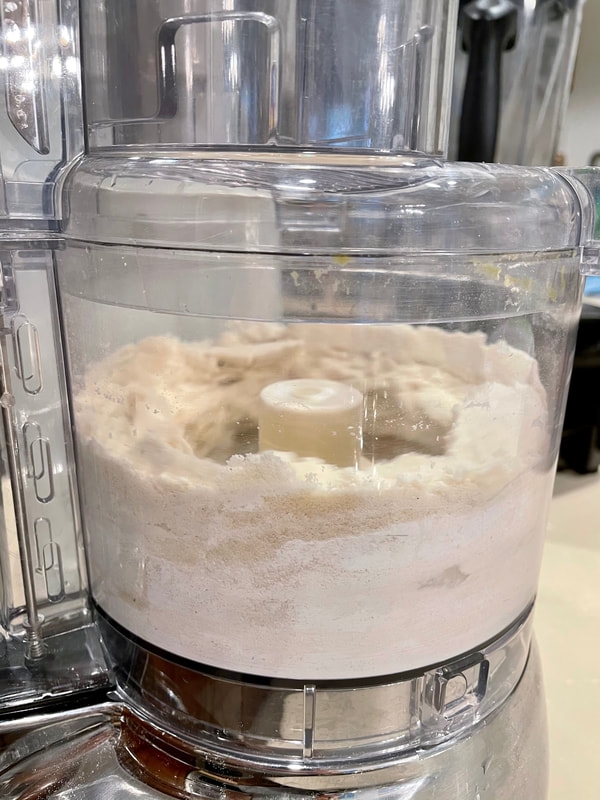
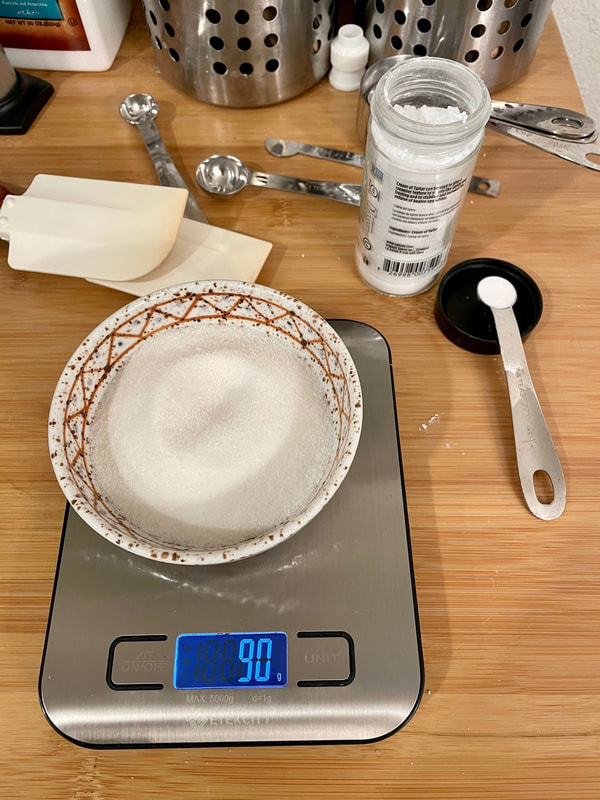
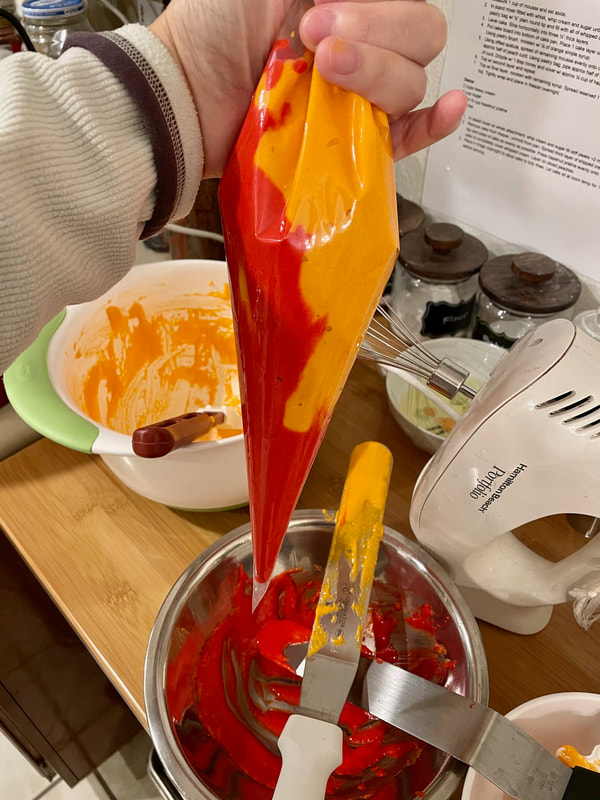
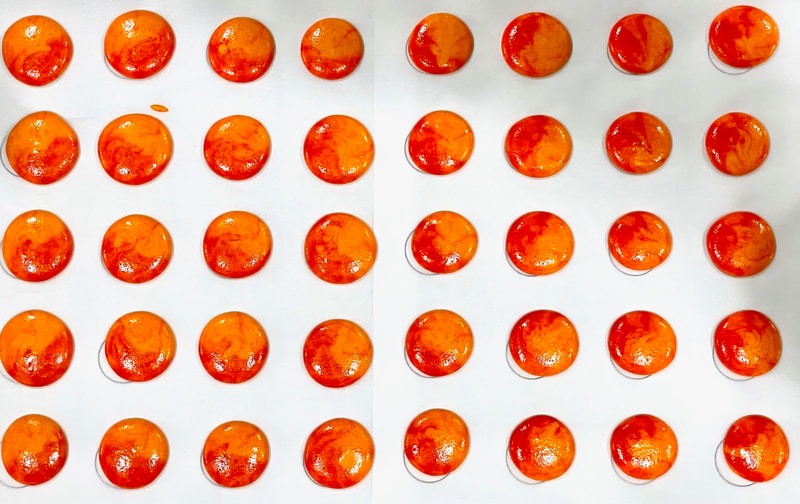
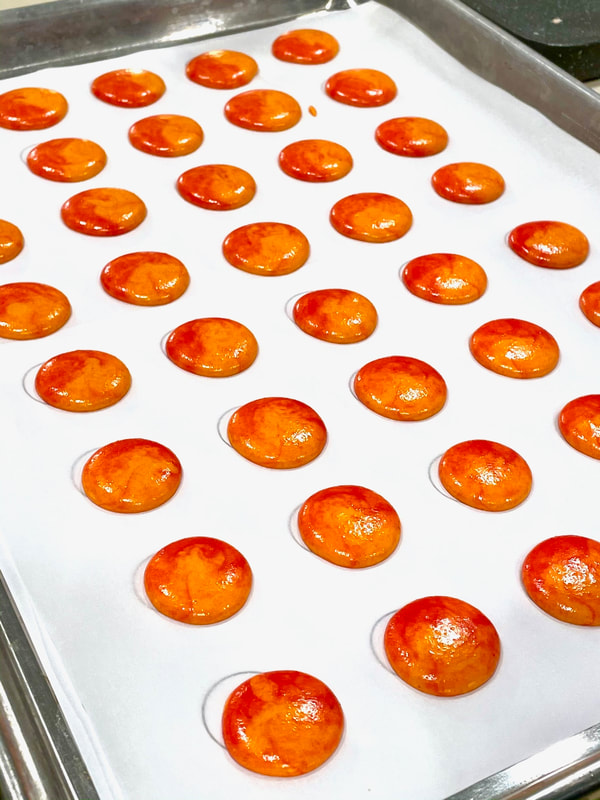
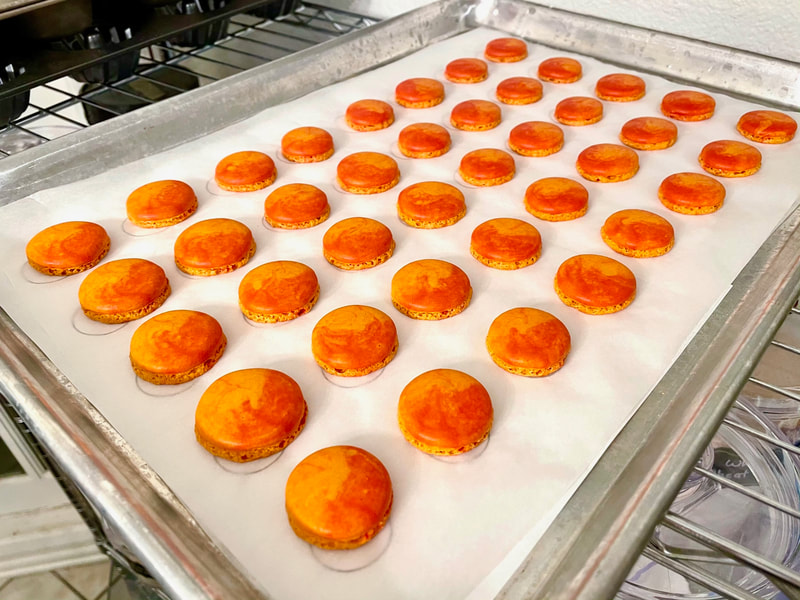
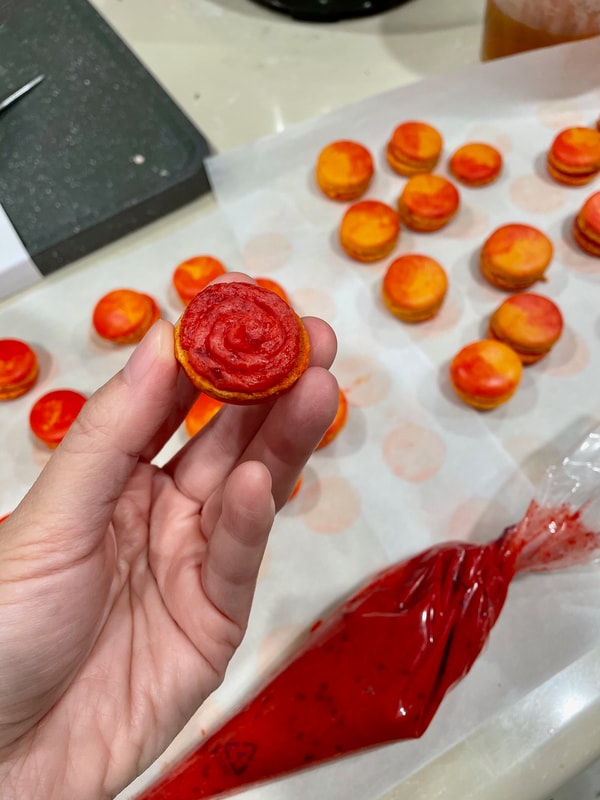
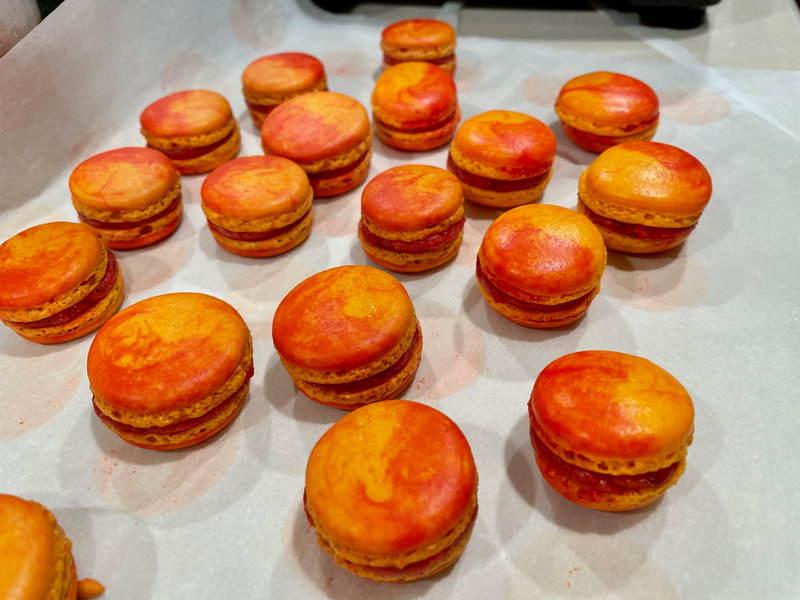
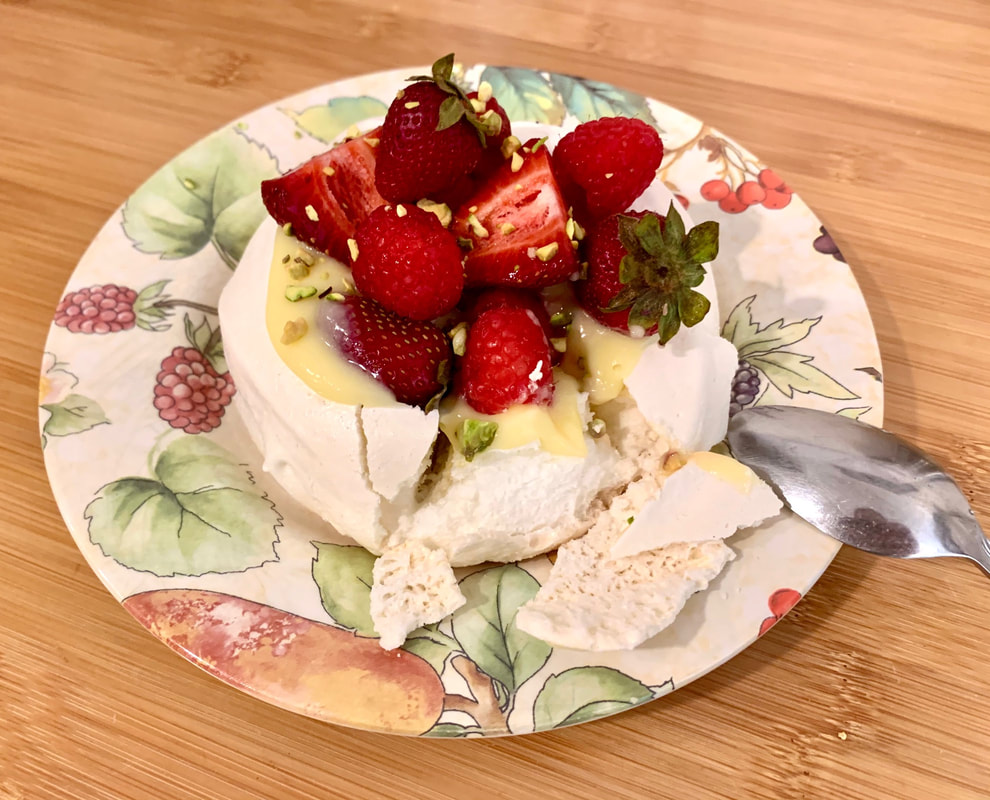
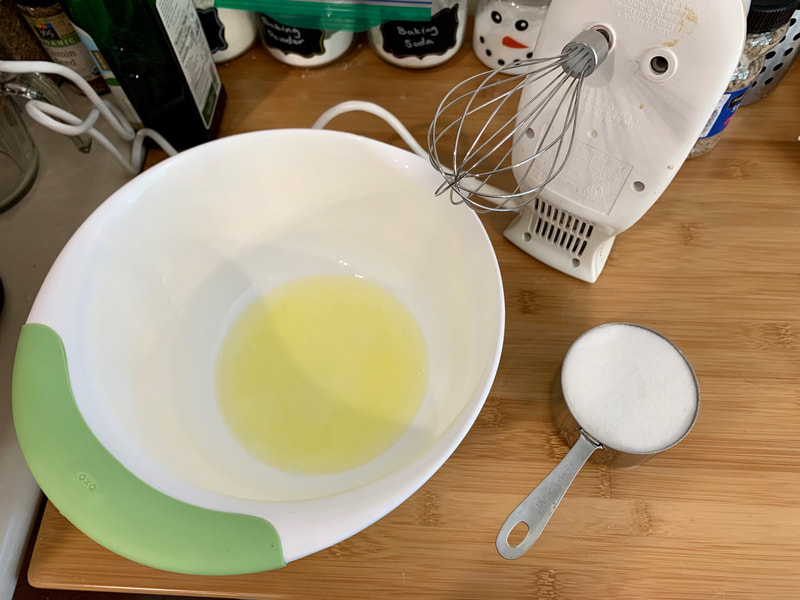
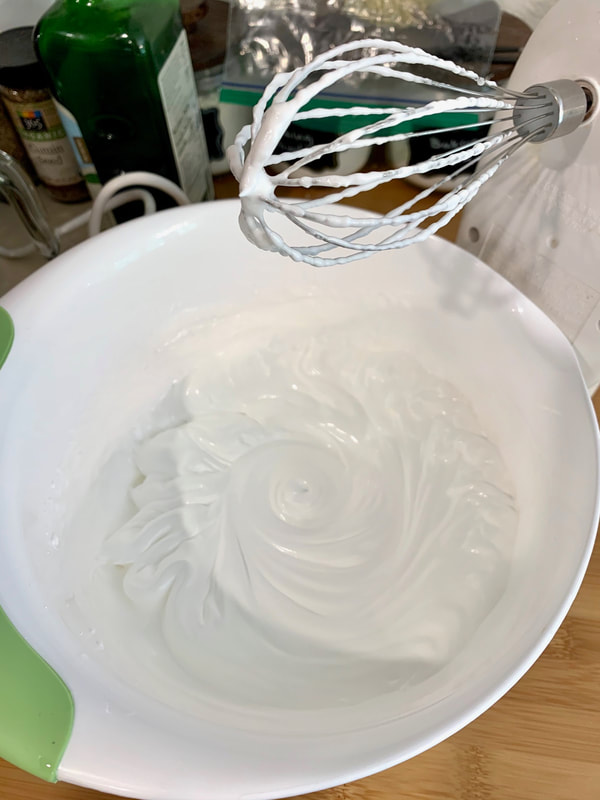
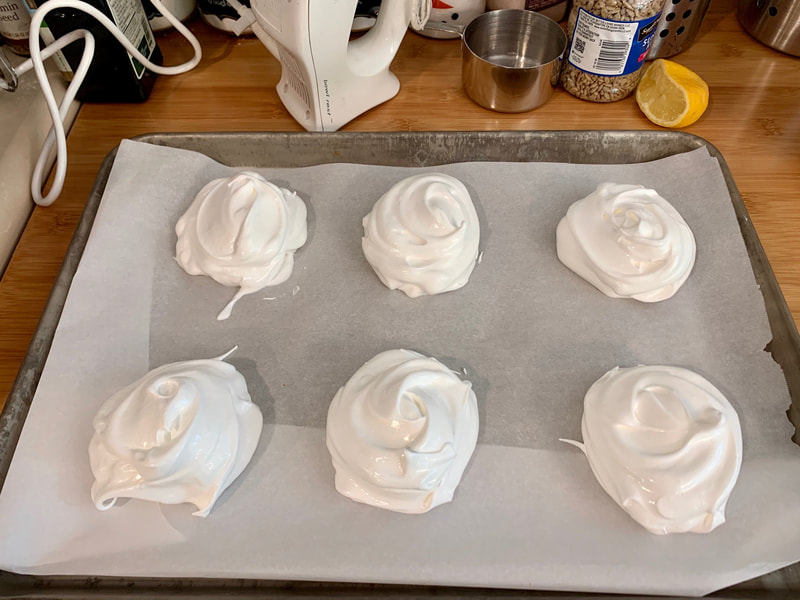
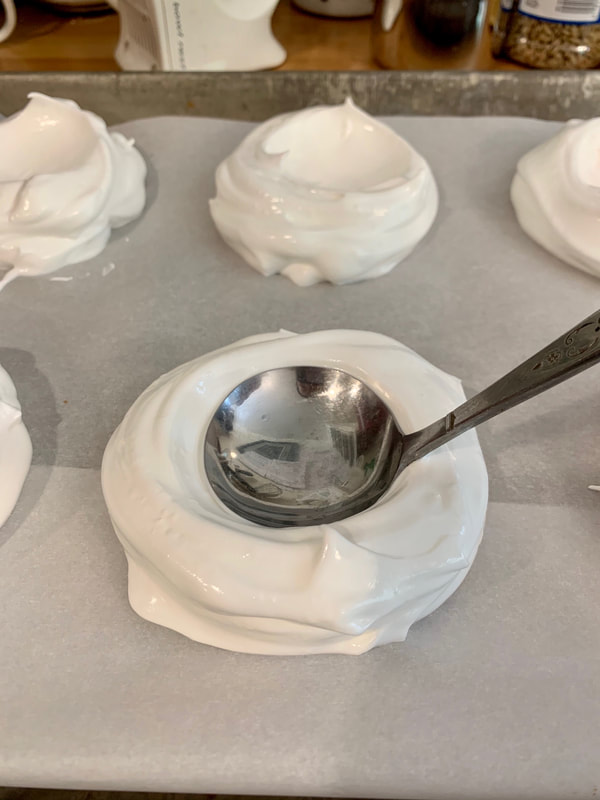
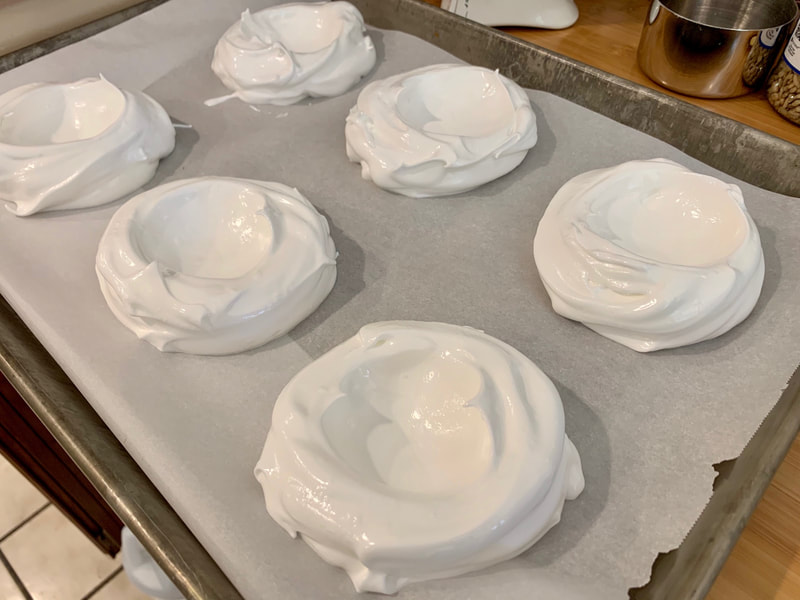
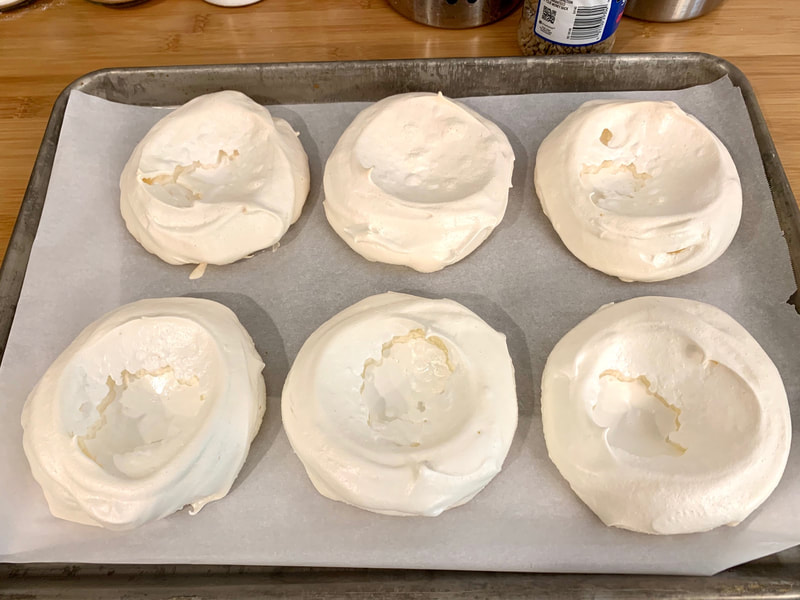
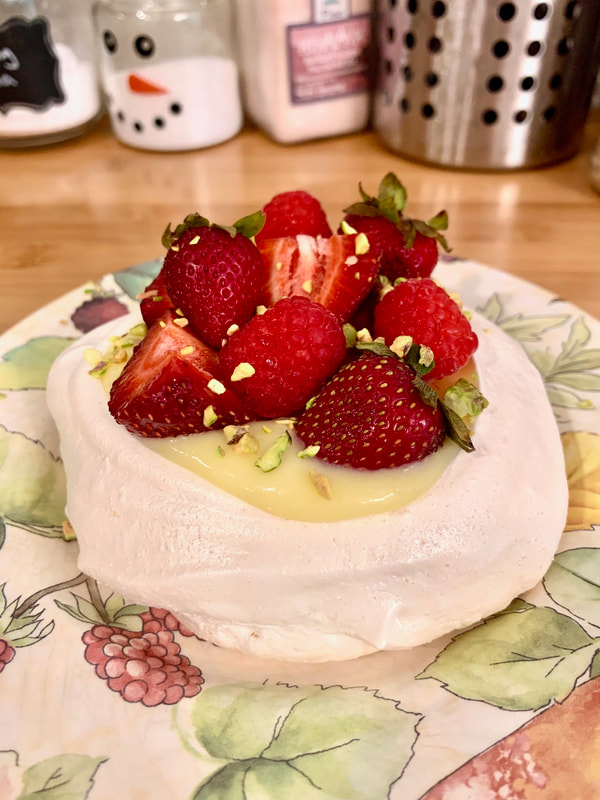
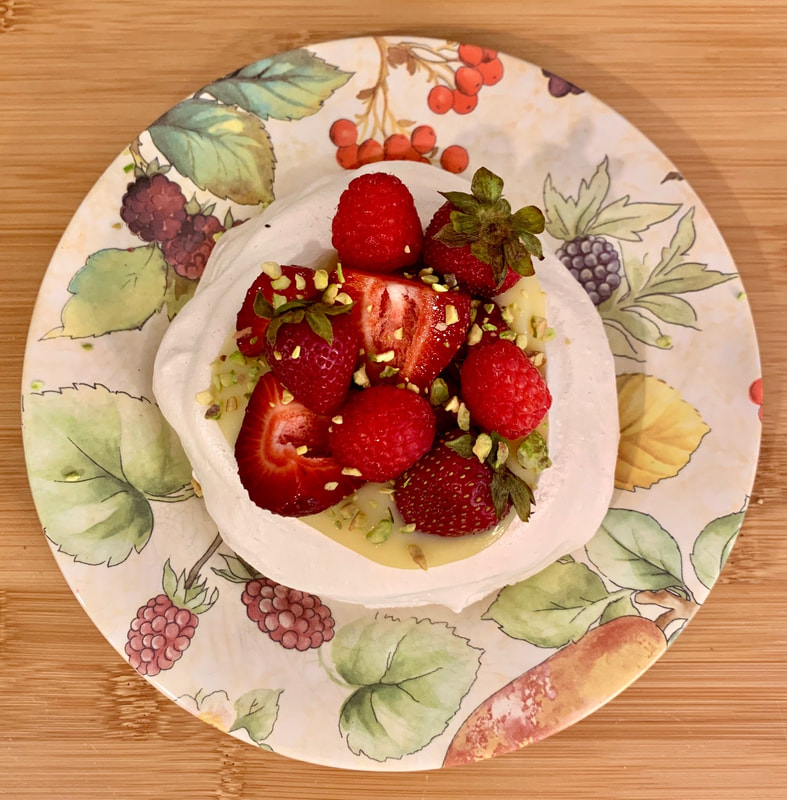

 RSS Feed
RSS Feed